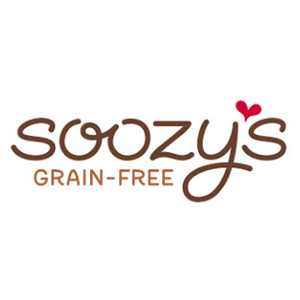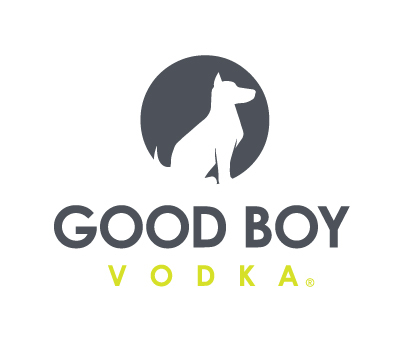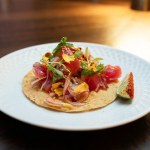Soozy’s Launches Three New Lines, Grows Retail Footprint
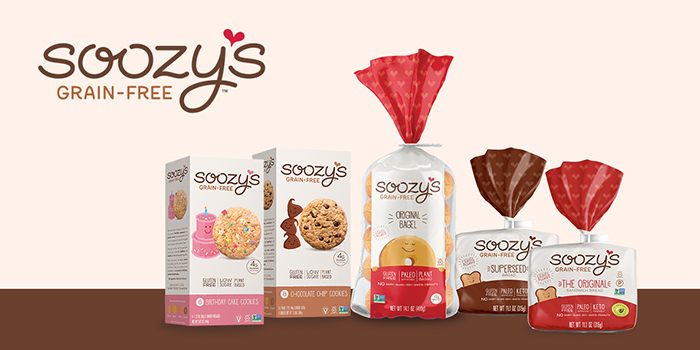
Soozy’s is looking to grow the grain-free category.
This summer the brand launched frozen bread and bagels as well as shelf-stable cookies into Whole Food Market stores nationally, expanding its retail footprint to 2,000 stores.
The New York-based company launched in 2017 at H-E-B with a line of frozen, paleo-approved, ready-to-eat muffins, adding frozen donuts the following year. From 2017 through 2019, the company grew to be sold in over 1,400 retailers including Kroger, Wegmans and Central Market. Adding the new products, however, has expedited the company’s growth. Whole Foods, which had the muffins and donuts in some regions, has already picked up the new lines nationwide.
Building a national brand from two frozen products has been “tricky,” said co-founder and CEO Mason Sexton, with stores often having space constraints in their frozen sections. Once it reaches the frozen set, Sexton said, the brand needed more products to get noticed behind the frosty freezer doors.
“[Growth at retail] has to happen when the time is right — when there’s an opportunity to get some element of brand blocking in the frozen section,” he said. “We think that’s important when it comes to grabbing people’s attention, sending the right message and delivering the right velocities.”
Hoping to grow its presence, the brand has spent recent years focused on new product development, said Sexton. Its R&D department, run by Soozy’s co-founder and CFO Susan Chen, launched the brand’s first foray into shelf-stable products in July, with three different cookie varieties. The frozen bread and bagels launched in June, with two kinds of bread: a half loaf of Original Sandwich Bread or Superseed Bread retailing for $5.99 while a bag of five Original flavor bagels retails for $8.99.
Although there are other grain-free cookies and breads in the market, Sexton said, the company felt there was room for Soozy’s versions, with high-quality taste and texture.
“If it’s [just] ‘as good,’ I’m not interested in launching it,” Sexton said. “I don’t think all the work, blood, sweat and tears of launching a product is worth it to have another alternative that’s ‘as good.’”
The cookies and bagels are also the brand’s first vegan products. That’s something consumers have asked for, according to Sexton. Grain-free is a “cornerstone” of the brand, he said; the company updated its packaging in 2018 to note “grain-free” rather than the more generic callout of “clean, delicious, mindful.” Moving forward, the brand will continue to emphasize its grain-free, paleo ingredient list and also add more vegan products.
“We’re not playing the ‘zero grams sugar’ or ‘zero net carbs’ game,” he said. “I think our positioning is around good, healthy, nutrient-dense ingredients. That story’s here to stay.”
To fuel its growth, the brand in April raised a small round of funding, led by previous investors BIGR and AccelFoods, and may raise further capital this year, Sexton said. Soozy’s has raised $3.5 million to date, $2.5 million of which was from the 2018 round.
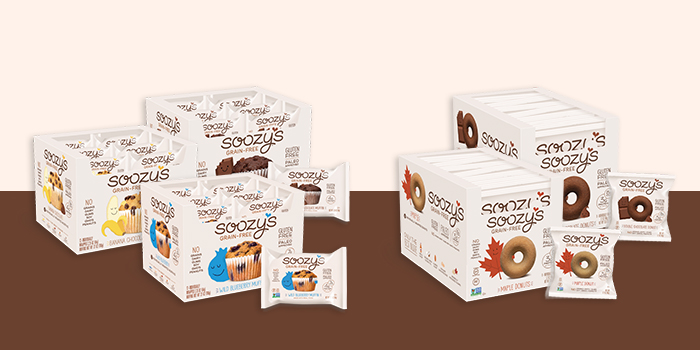
Looking ahead, the brand plans to focus on adding new flavors under existing lines and build its door count in the natural channel. Prior to its national Whole Foods launch, 70% of Soozy’s footprint was in conventional stores, including 800 Kroger banners, Sexton explained, noting that the products have mass appeal.
“We’re not trying to chase around and launch a bunch of places right away,” he said. “We’re trying to be thoughtful about certain retailers we can build a big business following with and grow from there.”
Hoping to further cultivate these relationships and create new ones within the startup space, the company is relocating to Austin this Fall, where H-E-B, Whole Foods and Central Market are based. The brand is also prioritizing online growth, having relaunched its direct-to-consumer (D2C) site in May. Sexton said he’s “agnostic” about whether online orders are made on the D2C site or a retailer’s site, as long as the experience is easy for customers.
“We need to be reactive to the changing environment around us, but I don’t think retail is going anywhere,” he said.
